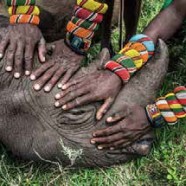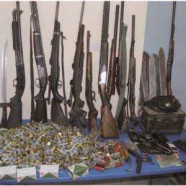Elephants killed and smugglers released
Following an important smuggled ivory seizure in Charles de Gaulle Airport in Paris in the luggage of two Vietnamese traffickers, the NGO Robin des Bois and Fondation Brigitte Bardot deplore that this significant action ended up in the almost immediate release of the suspects.
These two individuals were transiting from Angola via Addis-Ababa, Ethiopia and about to leave for Hanoi. They were released after 5 hours police custody.
According to the article L 415-6 of the Environment Code and 132-71 of the Penal Code, they are liable to 7 years imprisonment and 150,000 euros fine.
“On the Trail” n°10
“On the Trail” n°10 is now available.
Information and analysis bulletin on animal poaching and smuggling
The wildlife crime scene of July, August and September 2015
80 pages PDF, 5.7 MB
Rhinoceroses and elephants, pages 45 to 67
“On the Trail” n°9
“On the Trail” # 9 is available.
Information and analysis bulletin on animal poaching and smuggling
April, May and June 2015.
pdf 106 pages, 5.7 Mo
Rhinoceroses and elephants, pages 58 to 89
Well spotted !
Robin des Bois congratulates the Roissy airport customs for their large seizure of ivory from Democratic Republic of the Congo that had a destination of Vietnam (136 kg). The packages of “spare parts” definitely deserved to be targeted.
It is confirmed that Europe and France, contrary to preconceived ideas, are transit areas for the trafficking of ivory and other animal parts between Africa and Asia. The tusks weighing on average a dozen kilos come from breeding elephants whereas it is more common to see today tusks of 2 kg taken from elephants of 3-4 years.
“On the Trail” n°8
“On the Trail” n°8 is now available.
Information and analysis bulletin on animal poaching and smuggling
The wildlife crime scene of January, February and March 2015 through 500 events across the 5 continents. 108 pages PDF, 5MB
Rhinoceroses, elephants and mammoths, pages 56 to 90
An immersion in the war of rhino horn and ivory, a focus on the latest tricks of traffickers who hide ivory in medical plaster or milk powder, stuff reptiles and frogs in books for children and cigarette packet, paint leopard skins in tiger skins to maximize profits. An encounter with torn families of poachers, with teachers, scholars and vicars who teach and preach during the day and traffic at night…
Hong Kong and elephants
HONG KONG and PARIS (14 April 2015) — Today, a coalition of 51 NGOs coordinated by Robin des Bois and WildAid Hong Kong co-signed and sent a letter to Wong Kam-sing, Hong Kong’s Secretary for the Environment, demanding that the Hong Kong Government stop issuing any new import licenses and re-export licenses for pre-Convention elephant ivory (the letter pdf).
What does this mean, and how might this action help save Africa’s elephants?
The European Union is the primary exporter of alleged pre-Convention ivory, much of it imported by Hong Kong with the ultimate destination being mainland China ivory carving factories. This is facilitating an illegal ivory trade that’s fueling an elephant poaching epidemic in Africa.
Rhino traffic transits through Cherbourg
John Slattery, a member of Rathkeale Rovers (Rathkeale vagrants), was arrested on 6 April 2015 in the port of Cherbourg by the border police. He was landing from a car ferry arriving from Ireland. He was subject of an international arrest warrant. He is in custody for a period of 60 days, the time for justice of the United States to transmit its request for extradition.
The Rathkeale Rovers come from a community of people originating from Rathkeale in Limerick County in Ireland. They are sought by Europol and police worldwide. They specialize in theft, receiving stolen goods and illegal sale of antiquities. They are suspected of having participated in several rhino horn thefts from European museums. A horn of 8 kg was stolen from the Museum of Natural History of Rouen (Normandy) in March 2011. The neighboring Museum of Le Havre was also robbed but the stolen horn was in resin, as museum curators had, as a precaution, removed the authentic horn from the exposed trophy.
Elephants: advances in Brittany and Europe
In the interest of bringing about reconciliation, the Dupont house is taking off the market items 109, 110 and 111, which consist of five elephant tusks of which three are from the last elephants of Niokolo-Koba National Park in Senegal. They were to be sold on Monday, March 30.
The ban on the exportation of elephant tusks from the European Union is well on its way. Forty-one national and international non-governmental organizations have written thereupon to the European ministers charged with the fight against the trafficking of threatened species. The French, English, German, Swedish, Austrian and Dutch ministers who already abide by this measure just wrote to their counterparts to encourage them to follow their lead.













